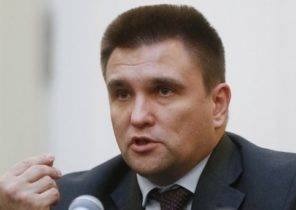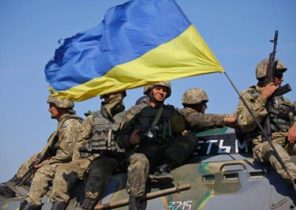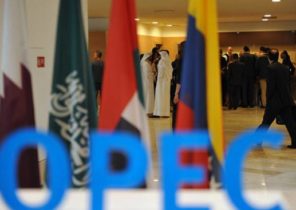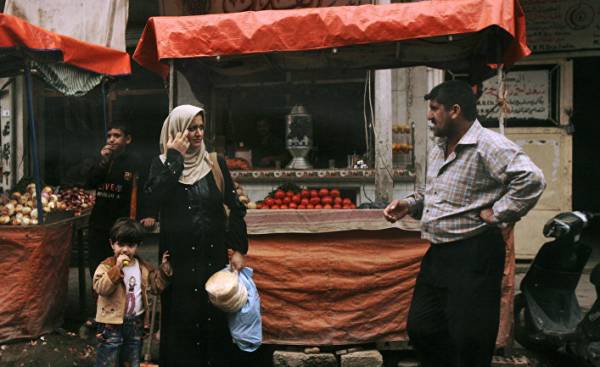
Maybe the great Tiger knows better than Mosul itself. He starts flexing in front of the entrance to the city of the Prophets, in recognition of his dignity and honor, and also gives a new name to the city, linking East and West. The town was called the “Humpback” due to the fact that the current and the riverbed is sinuous in the locality. Moreover, thanks to its vast green areas, the city also received a soft and gentle nickname of “Um al-Raban” (mother of two springs — approx. ed.), after the war, during which he used all kinds of weapons, failed them in the colors of the daisies, the symbol of the historical Assyrian capital of “Nineveh”, which was located in the Eastern part of Mosul on the hill Council or the hill of repentance. It went to a repentant people of prophet Jonah in order that their memory is immortalized in the Qur’an the Day of Resurrection.
Currently, the black cloud overtook Iraq: killing, destruction, displacement of people. Jewel of the North (Mosul) lost many of their historical monuments, as well as figures of science and culture that the city was proud of for a long time. Unfortunately, the world knows the history of death and destruction in Mosul, but he is not familiar with the life story, which was one of the oldest cities in the world.
Abu Bakr al-Baghdadi appeared in a Cathedral mosque of al-Nouri in black clothes and delivered a sermon, which analyzed thousands of analysts working in armed groups. Moreover, the media continued to convey the smallest details concerning rolex watches that were on hand al-Baghdadi.
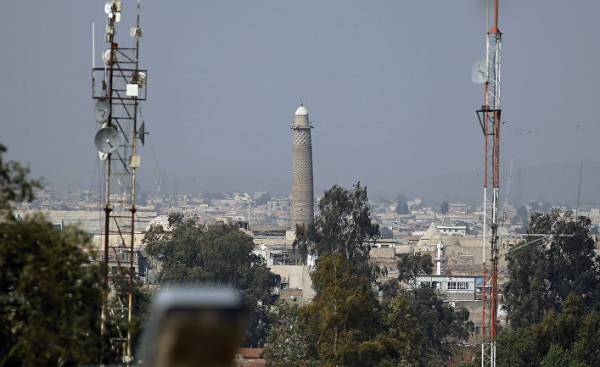 © AFP 2017, Ahmad GharabliВид on the Eastern part of Mosul and the mosque of al-Nuri
© AFP 2017, Ahmad GharabliВид on the Eastern part of Mosul and the mosque of al-Nuri
No one mentioned that al-Baghdadi defiles, rooted deeply in history in which each religion and each race has a special place. He spoke his sermon in camel the minaret of the mosque built by al-Malik Imad ad-DIN Zangi, the founder of the state of Samedov during the reign of Abbasid Caliph al-Mustadi of Bimillah in 566-568 years of the Hijra (1170-1180 in the Gregorian calendar — approx. ed.). Moreover, one of the sons of Mosul, who loved the city with all its Islamic and pre-Christian features, namely, Abboud al-Tenbarge saved the mosque from destruction. He also risked his life to cement the cracks and repaired the collapsed part of the magnificent minaret of an-Nuri.
Peace and armed groups that are behind al-Baghdadi, trying to put on display their ability to speak, do not understand that they face the mihrab, the creation history of which dates back to the 14th century. The mihrab of the great mosque, or Umayyad mosque, was built in the first century of the Hijra, and was later moved to a mosque an-Nuri.
Rabi Ibn al-Atkal in the 17th year of the Hijra (638 year in the Gregorian calendar — approx. ed.) have discovered Mosul Islam. In addition to the monuments of different historical epochs, there also appeared an Ad-Dur al-Mansur (one of the most authoritative collections of Sunni interpretations of the Koran — approx. ed.) so none of the scrap, despite endless attempts, you will not be able to destroy the truth and glory of the city.
Islam has destroyed the history of Mosul, but rather complemented it, creating a city filled with great history, which brought to mankind in the form of this library (library of Ashurbanipal). During the Golden period of the reign of the Assyrian territory was extended East of the Tigris to the West of the river Nile. At the same time civilization continuously alternated each other, and there was the most ancient Arab Kingdom “Hatra” (El HADR), which still is a witness and a sign of the fragility of the desert near Mosul.
This historic treasure and wealth complement the iconic location, availability of water resources and fertile land (Mosul remains a “trough” of Iraq and farmlands are some of the most fertile land in the region). In addition, it has important geographical position in Iraq, and thanks to its trade routes with countries of the Levant and Anatolia, he was the center of attention of the Ottoman Empire. Mosul is considered the first Arab city passed under the rule of the Ottomans in 1515, and the last Muslim city, which was abandoned by the Ottoman army in 1917. During this long reign of Mosul has become a Central part of the Ottoman Empire and made it an important part of the history of the city.
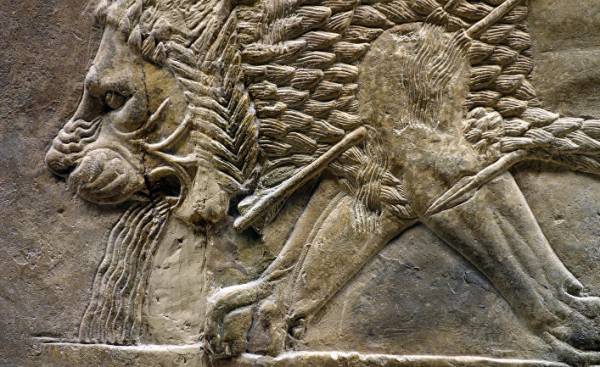 © flickr.com, Steven ZuckerРельеф from the Palace of Nineveh, modern Mosul
© flickr.com, Steven ZuckerРельеф from the Palace of Nineveh, modern Mosul
Perhaps the best evidence of such influence is the emergence of the Jalili family of Mosul, whose members were able to occupy high positions in the Ottoman Empire and in some regions within the Empire. Moreover, Mule Osman Mouli — writer and musician, who was preaching to Muslims during the Hajj on behalf of the sultans of the Ottoman Empire, was even able to live in the Ottoman Palace. On the other hand, the language “osmanism” continue to reflect the impact of the era. For many dialectal expressions, you can find the same value in the Ottoman language. This is also evident in architecture and the urban landscape.
In the formation of the modern Iraqi state, Mosul has been a genuine part of the Iraqi mosaic. Residents were well known and prominent people in the country, in positions of military, judicial and educational bodies. The city is waiting to be explored.
Prominent political, military and literary figures immortalized in the history of the city. For example, Nur al-DIN, Imad ad-DIN Zanki, al-Jalili in poetry and management, Mahmoud Shit Khattab, Chancel in the military, Zaha Hadid in architecture, Kadam al-Mallah in nuclear physics, the Fatah-bi-ATA-al-Musli and Kusala Alban in Sufism, al-Dodge in history, Mullah Othman al-Musli in music, and so this list can be continued indefinitely. I have chosen flowers from each garden. The natives of Mosul have excelled in every area and have contributed, as in the history of Iraq and history of the world.
Today, despite all this destruction and devastation Mosul quickly shakes off the dust of war, which many can’t understand. Moreover, despite the fact that the fighting has not yet ended, young people and men of the city attempted to confront in all areas. Extends a helping hand, she returns the streets to the past, restores the building. Students are rushing to school. They don’t care about the destruction of the walls of shells, they do not stop the fear caused by the fragile security situation. It’s all here and just a few metres in the Western part of the city — the noise and the sounds of war.
Quick return to life and overcoming severe trials he speaks of his life force and energy. That’s what makes me to write all of the above. The main idea of the article is that Mosul is not ready agree with all the deadly disasters, because in his vocabulary there is no word “late”.
